#especially with the overt sword imagery
Text
i like overthinking this sorry ok so what’s interesting about the whole jaime sitting on the throne “just to sit down” bc it is just a chair bit is that yes, jaime has a particular disillusioned relationship with that symbol of power, and the thing is that that chair is like a gazillion meters up in the air or whatever so i do think it is a bit more complicated than just him having to sit down after #allthat, he could have very well just sat on the stairs lol. there was a more conscious decision being made on his part.

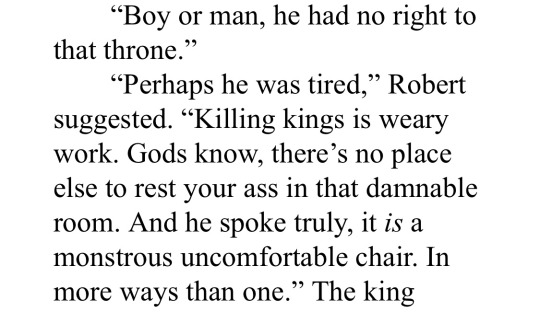
and this whole exchange is more about parallax, about an outside interpretation rather than what is canonically going on in jaime’s head. and i get that a lot of people think it is mostly “a remnant from the original outline”, but i do not think that means george wrote it with the intention for it to lock on a specific trajectory, i think it is a seed that can be gardened however he pleases, especially because of some heavy foreshadowing with him in agot already for many things that i think are pretty incompatible with that original outline. i do think there is a reframing happening in asos with that action and we can still make sense of it. but neither ned or robert were correct.


jaime’s experience leaves him with a very interesting mindset when it comes to “right” to absolute power like the throne. the image of a king figure gets torn down in every way: aerys obviously becomes a destructive person who was still born with right to that power, and him having that power has devastating consequences, but what also sticks with jaime is that contradiction in his death. how he dies in such an ugly human way. there really is nothing differentiating him from the lowborn rossart, in fact, rossart seems to have died with more dignity. the whole “equal in death/not equal in life” thing. the vulnerability of a king. i do find the “sword across the knee” bit interesting, bc it does mean denying guest right in the north. i wonder if that is just meant to play into a ned/jaime conflict and misunderstanding, or if george is insinuating with that imagery that jaime is guarding the seat in a more abstract way, and sending a message with his existence (especially considering what his role and the whole wildfire plot in the story being stopped and a king being murdered by a kg means on a less personal scale: the whole analysis of ‘what is power and who holds it?’ that permeates this series), almost like a warning, considering what goes through his head before he climbs up there. anyway, i do read it as an act of conscious ‘defiance’ of some kind though. if we go beyond what a 17 year old jaime can fully grasp at that point, he did break the social order by murdering his king as a kingsguard and that has implications in their world. that is an interesting precedent. and then jaime is so disillusioned by social contracts of this sort that he sees no difference between his act and the act of robert, ned & co, which is why he is so particularly frustrated by what he views as hypocrisy, ntm that robert tore the realm apart with his war in his mind and he rues him too. and then ofc with ned’s commentary of “he had no right to that throne”, like this is just the mindset of society, it is built on these constructs of rights and oaths etc, and they all serve a purpose in reinforcing a status quo. jaime all throughout the present text shows no concern for, or even an active rejection of, this construct of ‘right’ to that throne. like he does seem to view the whole thing like: “you can win that power with swords, power resides where people think it does, what does the rest matter?” (as per his targ romance with cersei delusion passage) so many of his thoughts and actions imply this rejection of the construct of inherent right to that power, especially through birth. he also does not view it as something with that much ‘worth’ in terms of what it means for the individual. it gets as overt as it can with “how much can a crown be worth, if a crow can dine upon a king?” etc. i do not doubt all this also bleeds into his continued rejection of his role as heir to some extent. and it all feels like the effect the aerys experience/robert’s rebellion would have on him and his relationship to power. though i do think in some way he does still crave an “aerys anti-thesis”, a “good king” he does not rue, and he can acknowledge this desire more when hope is rekindled in him. anyway, i do think him sitting on that throne is a symbolic gesture, maybe even a form of taking back control through diminishing its value, even more hard-hitting considering he does not want the throne himself, and then belittles it even more with his words afterwards.
and what is also cool to me is that there is a motif with jaime’s golden sword: ned especially is so fixated on it being tainted by blood, especially of his king, it is an image that he and others keep conjuring, it exists in the collective consciousness. 




and then what that passage reveals is that jaime’s golden sword does something very different than become tainted with blood in his nightmares. it is not killing a king, it is cutting down an endless stream of burning corpses. it also reveals that jaime is still haunted by something that never happened. i find it interesting that his conscious often goes to ned, even in the fever dream he expects him to come out, but he is wrong there too, just like how he is not the one that haunts his dreams in general. he even acknowledges it: “The moss covered it so thickly he had not noticed before, but now he saw that the wood was white. It made him think of Winterfell, and Ned Stark’s heart tree. It was not him, he thought. It was never him.” things are still much deeper than just that palpable and damning judgement he received for his finest act from that man, who in many ways embodied the ‘hypocrisy of honor’ in jaime’s mind.
104 notes
·
View notes
Note
Hi! Sorry this got long, just trying to come across correctly with thoughts. Appreciate your time!
You've mentioned before the monologue of his was performative so I'm curious to get your thoughts on this.
I'm chewing over my own thoughts so forgive imperfect wording, but as a representation of the character (like as a master motif) do you think the snake is the best for c!Dream?
Personally I've been realizing that I don't think it is. It feels, as you said, performative and that it is a mask. I definitely think he has snake like behavior at times and can be one, but I don't think it's quite right as his overt motif like fans are latching onto. Personally I think the puppetry and mess of strings were more on point with him. It feels like its more fitting with how he came to this point and how he acts, being a double edged sword he gets tangled in as easily as he tangles up others and guides their actions.
I always love your character analysis so thoughts if any?
- casualix
yeah, I don’t really think he’s a snake either.
Archetypically, snakes are above all deceivers and tricksters who accomplish their (poisonous, evil) ends via direct, charismatic manipulation. c!Wilbur’s (inaccurate!) flicking tongue comment comes to mind. They convince people to heed honeyed words. That’s not really c!Dream: he tends to lie via circumstance and omission rather than with force of personality.
Snake is an empowering choice of metaphor, I think that’s a large part of why Dream chose it. It is a neat answer to the way that people have pigeonholed and hurt him for being quote unquote evil, and the ways he’s pigeonholed himself as the same. It’s nice for him to situate himself as something clever and dangerous and deadly.
I think puppeteer imagery is also off, even further off in some ways. The strings entangling himself as well as his foes is pretty nice, thematically. A web is closer. But especially puppet and even sometimes web imagery both tend to imply a large degree of personal control over both events and people that Dream doesn’t actually have. Like, Dream’s plans are not really that complicated? Nor do they rely on a ton of moving pieces that all need to align perfectly. Dream tends to be flexible with his plans, his plans tend to have redundancies so that lots of different circumstances and outcomes could lead to his desired result. That’s not very puppeteer-like imo.
My reservations about web imagery aside, though, I do kinda like Dream as a spider: because he is something venomous and adaptive and unseen. He waits in the shadows for his prey to make a mistake. It doesn’t matter if they blunder here or if they blunder there—the web casts a wide net, and no one else has even noticed that it’s here. The web is a secret trap; the web is not a means of control.
47 notes
·
View notes
Photo


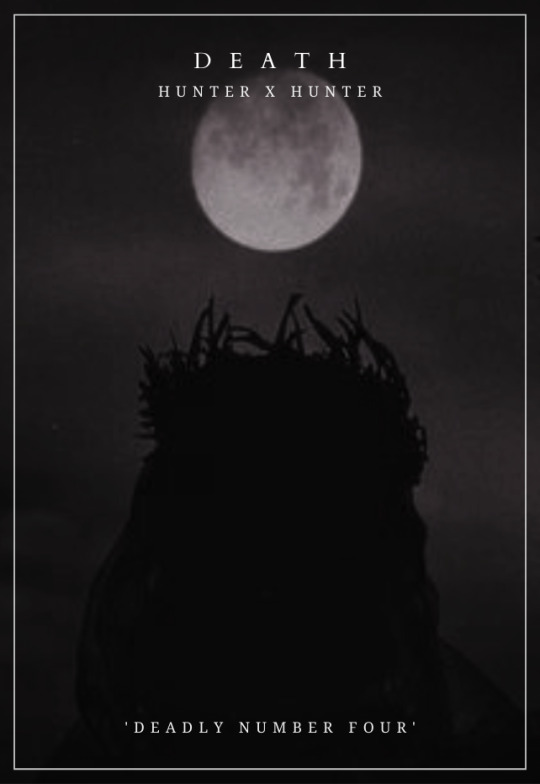

✶ 𝐇𝐗𝐇 𝐓𝐇𝐄𝐌𝐄𝐒: 𝐋𝐈𝐆𝐇𝐓 & 𝐇𝐎𝐋𝐈𝐍𝐄𝐒𝐒, 𝐃𝐄𝐀𝐓𝐇 & 𝐃𝐀𝐌𝐍𝐀𝐓𝐈𝐎𝐍
Long story short, I have been thinking about this for wayyyyy too long now and wanted to get some ~thoughts~ & analysis written down! This post is going to be...fairly long, lol. Apologies in advance :D
Also, if you can’t see the last gif (the one for ‘holy’), click here. Tumblr keeps fucking up the image when i try to upload it :////
This post is probably going to be about 2/3 yorknew & phantom troupe/kurapika focused, 1/3 chimera ants, maybe with some references to other arcs (including manga-only arcs) mixed in. so, ofc, tons of spoilers ahead! also, i realize that my blog theme is hard to read (and i’m p sure clicking ‘keep reading’ sends you to the og post itself), so i’m linking the post w/ full text copy/pasted in on my art backup side blog (which has a more legible font) here.
✶ 𝐃𝐄𝐀𝐓𝐇
I’m sure absolutely nobody is surprised with me starting here - there is just. SO. MUCH. DEATH. in hxh. & right from the start, one thing I noticed that togashi really emphasized was the #4 and its connection to death. in japanese, chinese, and im p sure some other asian cultures the number 4 is pronounced like the word for death so it’s associated with death in general, and boy oh boy does the ‘deadly number 4′ thing show up E V E R Y W H E R E. we get to the hunter exam, and hisoka is applicant #44. kurapika is #404. i didn’t notice it at first, but this was so intentional holy shit. togashi is NOT SUBTLE.
So pika & hisoka are, right off the bat, associated with death. okay. and then there are even more clues to drive the point home: hisoka is member #4 in the phantom troupe, kurapika’s birthday is april 4th (aka 4/4). 100% not a coincidence (!!). with hisoka, it’s pretty obvious why togashi’s throwing all this death 444444 stuff around - dude is a psycho murder pedo clown, literally gets off on killing people (and there’s also the fact that judas sits 4th from the left in the last supper painting, and he’s sort of the judas equivalent for the phantom troupe). with kurapika, though, it’s a bit more subtle and woven deeper into his characterization, which i LOVE. togashi puts the mans in blue & gold & white (traditionally ‘pure’ or ‘heavenly’ colors), makes him so fucking kind & so good-hearted.....when he’s not relentlessly pursuing his revenge, ofc. more on this in the next section, but pika = death. togashi has made that v v v clear.
Backtracking a bit to hisoka, though, I also just wanted to point out the 4 is death symbolism in the fortunes too (GOD i love the fortunes): in one translation, he’s the false fourth moon, and in the og japanese (i think), he’s the false hare (4th in the lunar zodiac or w/e it’s called. i don’t know the japanese cultural influences here, but in the chinese legend that established the zodiac animals, they race across the heavenly river & the top 12 animals got zodiac slots. the hare finished 4th, so it’s #4 in the cycle).
And just as a final note, Tserriednich is the fourth prince of the kakin empire, and also another dude who has a hard-on for murder & other gory shit. again: togashi is not subtle with this, lmfao
✶ 𝐇𝐎𝐋𝐘, 𝐔𝐍𝐇𝐎𝐋𝐘
As probably everyone who’s gotten to yorknew knows, togashi is so 0 fucks given when he wants to be. I mean there’s the whole thing where he just. took New York and decided, Yorknew. LMFAO, but also, he made the main antag of that arc be named chrollo lucilfer, sit around in a ruined church, have a reversed cross coat, pale & dark-haired/dark-eyed, generally dressed in dark colors, very terrible murder guy. liiiike......chrollo x devil symbolism game is 1000/10 at this point lmaooo
And i know absolutely nothing about christianity in general, but pt/kurapika & yorknew arc is just so full of christian imagery/symbolism! one thing that i L O O O O O O V E though is how togashi really blurs the traditional christian-coded good/evil, holy/damned boundaries.
Back to kurapika: he wears gold and blue, his coloring is very stereotypically ‘angelic’, he’s precious and good and kind. his chains are all about ~judgment~ and ~healing~ - some of the chains are also in literal cross shapes, aren’t they? And the chain dagger in his own heart...the imagery is very startlingly similar to the immaculate heart of mary, where the swords stabbing thru the heart apparently represent seven sorrows. IDK much about this stuff other than the visual similarities; literally had to google ‘daggers through heart christianity?’ to even get the name of that thing LOL. anyway, at first, it seems like togashi establishes him as the ‘angel’, the ‘good’, the ‘holy’ in the angel/devil, good/evil, holy/damned dichotomy between him and chrollo.
But that’s not the end of the story. his entire storyline is driven by a huuuuuuuge giant desire for vengeance, first of all, and then there’s the scarlet eyes, which canonically are seen as demonic/cursed/what have you (according to one of the movies or smth? where they show pika as a 10 y/o?), and then we also have red eyes in modern culture being associated w pretty much the same thing (vampires, anyone?). the fight scene with uvo has everything in b&w besides the blood on his face & his red eyes & the moon (<<< more fortune foreshadowing & symbolism, i love to see it), and there are tonssss of scenes where he has to suppress his rage. so all of that is obviously not very angelic of him i would say LOL. in fact, what i find super interesting is that the scarlet/red eyes (which are ‘demonic’) is actually the driving factor behind his super powerful nen abilities; this ties in so well with the fortunes & death associations imo! the fortunes call him the ‘death-bringer’ in one translation, or ‘half-angel, half-death’, so that’s one side of pika = red eyes = death, but there’s also the fact that emperor time is literally draining his life force. so pika = death for both himself and others namely the pt, question mark?
Now for chrollo: togashi’s devil symbolism is EXTREMELY overt with him, but i love the subtler jesus references too. the church thing, obviously, and the st. peters cross which is cuz st peter respected jesus too much & didn’t think he was worthy to die in the same way as him (or something like that, i am the most atheist person in the world & hxh is literally my entire christian education pls) but is also used as an anti-christianity symbol these days. bandit’s secret looks like a bible, lbr, and mans has a cross tattoo.
Other things beyond visuals - 12 spiders, 12 apostles; hisoka’s betrayal, where member #4 can be thought to correspond to judas sitting 4th from left at last supper. and this miiiiight be a bit of a stretch, but i think the meteor city being the place of origin may also play into the blurred line between angel/devil and holy/damned here; meteors are defined as space rocks that are in earth’s atmosphere, becoming incandescent in the process. meteorites are for the kinds that actually reach the ground. and idk, lucifer was cast out of heaven / sky too right? so i think there might be some subtle fallen angel imagery/symbolism playing into the pt as well
✶ 𝐋𝐈𝐆𝐇𝐓 (𝐀𝐍𝐃 𝐃𝐀𝐑𝐊𝐍𝐄𝐒𝐒)
Last section yay! i don’t have as much to say about this, besides when i was making chimera ant arc edits & realized that there might have been some subtle gon/meruem parallels???
So obviously, everyone knows that line killua says to gon - “you are light” - and then i was just remembering that meruem’s name means.... “light that illuminates all” (!!!!). maybe it’s a coincidence, but knowing togashi, i’m leaning towards nahhhh. there HAS TO be some kinda meaning there (!!).
Going back to the events of the chimera ant arc....ooh boy. let’s see: gon is optimistic & hopeful even in the face of kite potentially being dead, killua says he’s light, they find kite & dude is fucked up, gon is pissed. gets all angry & ~dark~, especially during the palace invasion when he’s staring pitou down as she fixes up komugi. then the actual fight against pitou: more darkness, more anger, but through it all there’s still light, namely his jajanken being very orange & fiery lookin.....and that final sequence, where he puts all his possible nen he’d ever have into his ~final form~ or wahtever & turns into a male version of true form!bisky but dressed in a crop top & short-shorts (i am SCARRED, btw. s c a r r e d !). there’s just huuuge flashes of light as that’s going on, and it reminded me of supernovas or dying stars when i was thinking about it, where the star is like, collapsing under its own weight? & burning thru its own fuel, until there’s nothing left except a dwarf or black hole or what have you. one final, extremely deadly burst of light & energy before death.
On the meruem side of things: born into a dark cave, exhibits a traditionally evil/cruel/wicked/whatever personality/traits so that has ppl associating him with darkness. then he gets to know komugi, starts to appreciate other aspects of humanity, seems like he could have actually turned into a decent person who doesn’t want to eat everyone - so that’s a ‘path to light’, maybe? - and then the extermination team yeets themselves into the palace, netero takes him out to bumfuck nowhere, they fight. netero’s fighting is just ALL light, from his giant ass golden 100-type guanyin bodhisattva to the poor man’s rose. again, there’s the sense of finality to it all, in a similar vein to dying stars: netero comes in determined to kill meruem no matter what, and we all know netero doesn’t flake. then we see netero get destroyed after the zero hand, and he triggers the rose, and everything is burning & on fire before the flames are put out and all turns dark again.
But wait!!! pouf & youpi revive meruem and all he does is play gungi with komugi, even with the poison of the rose. he eventually dies, and the gungi pieces in that final shot of them together (i am BAWLING just thinking about it holy shit) has one that’s all white, one that’s a black ring and white inside. i assume all white is for komugi, who has never done ANYTHING wrong in her LIFE, so i like to think that the 2nd one is for meruem - born “into darkness”, literally & figuratively, but he turns something like ‘good’ by the end. it’s interesting how togashi has sort of gone for a bit of a subversion here: the hero going from light to darkness, and the main antag from darkness to light.
✶ 𝐂𝐎𝐍𝐂𝐋𝐔𝐒𝐈𝐎𝐍
AahhhhHHHHHhhh so if you read all the way down here through my LONG rambles, tysm! i would LOVE LOVE LOVE to hear what other people think about all this, and i’ve FOR SURE missed tons and tons of stuff - chimera ants is just. SO MUCH. and i don’t know it as well as yorknew eeek.
I’m not sure if i’m really ~knowledgeable~ in any other areas relating to hxh, so this might be the only one of these that i do, but i definitely think about some of this - esp all the religious symbolism & #4 stuff - a ton! so in the meantime, if it’s of any interest, i’m just going to shamelessly plug my hxh x religious beliefs/superstitions edit series :D lots of love to all!!!
#hxh#hunter x hunter#hxh edit#hxh fanart#gon#killua#hisoka#kurapika#gon freecss#killua zoldyck#chrollo#chrollo lucilfer#kurapika kurta#hisoka morow#chimera ant arc#chimera ants#yorknew#yorknew city#shaiapouf#pouf#neferpitou#pitou#meruem#komugi#youpi#hxh analysis#hxh meta#hunter x hunter fanart#hxh graphics#my art
118 notes
·
View notes
Text
Some Biblical Symbolism in TWD 10c (Team Delusional)
Okay so I am VERY behind on the times, due to a ton of family engagements lately; however, now I’m trying to catch up and in doing so, I’m just going to make posts looking at all my recent, random notes from 10c and beyond.
This post starts by looking at the symbolism in the Bible verse that’s referenced in 10.19 “One More.” This one verse in particular lead me down a lot of other Biblical rabbit holes, and I’ll try to talk about how they pertain to existing Team Delusional arguments, plus some other stuff!!

David and King Saul
The Bible verse I took down in my notes for the episode is 1 Samuel 16, specifically 16:21. This chapter is about God sending Samuel to anoint a new King of Israel after Saul basically pisses him off. Samuel chooses David, a young shepherd and son of Jesse, who is also a wonderful musician. He plays the lyre.
I remember reading about David when I was looking into Daryl/Biblical imagery. Initially I took Daryl’s fight w Beta in season 10 up in that tower to be a David vs. Goliath fight, but after reading more deeply into it, I scrapped the comparison. I read more into David and was actually more taken with him as relatable to Beth. More on that and how this impacts TD in a minute.
In 1 Samuel, King Saul of the Israelites is being tormented by demons (sent by god ofc) and sends his servant to bring him a musician to soothe his brain. The servant suggests David who comes to play the lyre for him and befriends his son. Anyway, consumed with fear that David is going to oust him, Saul tries to kill David, so David goes on the run, as a fugitive, basically until Saul and his son are killed, and then David returns and takes his place as King of the Israelites.
Anytime Gabriel is in the scene, there’s Biblical shit. So I was on top of "One More.” I didn’t really know what to make of the story with Saul and David and why it’s featured in this episode, so I talked to my husband who doesn’t watch the show (which is good because he’s coming at my questions unbiased) but he knows the Old Testament super well. I asked him whether Saul was supposed to be a “villain,” or merely a tortured king. My husband said Saul is not a villain, but a king who is meant to symbolize the unique plight of kings and leaders often characterized as the Sword of Damocles, ie: the sword always hanging over their head, and how the constant threat of death and/or usurpation can push them to great fear, madness, paranoia, and hasty decisions.
As the de facto leader of Alexandria, Gabriel is now in the same exact unique bind for which he sold out Rick to Deanna in season 5. He is potentially becoming a Saul figure, with the pressures of leadership causing him to turn away from his faith. This is a MAJOR shift in character dynamics for the show, as well as a big reference to Season 5 (an important season for TD, obviously). Season 5 Rick is also a very good Saul, as we see him falling to madness, hubris, and fear, and on the clear path to losing his people and his throne. I think we’re witnessing Gabriel now in a similar scenario in which his actions have finally begun to bear the weight of his responsibilities as a leader. He kills Mays because Mays is a killer and unhinged. It’s why Rick wants to and eventually does kill Pete in season 5. Gabriel killing Mays startles Aaron, and it isn’t pretty, but to him, it’s the right thing to do, even as it belies his cloth and belies his faith to do so.
With his eyes, one light/one dark, as well as his priesthood, Gabriel is a perfect canvas for this sort of Saul struggle, especially now, as Michonne is gone, and Siddiq is dead, and he is not only the leader of Alexandria but now a father to a child, and this only further complicates his motivations. I also think this whole thing, ie: Gabriel as Saul might be another purposeful recycling of seasons 5, which 10c has been doing a lot. As has already been pointed out by @twdmusicboxmystery, “One More” also rehashes a lot of themes and scenarios from “Still.” The entirety of 10c is consumed with cycles.
Saul and David through the Team Delusional Lens
ON THAT NOTE: Beth is an interesting David figure, since David’s main role before he becomes king is as a musician. You probably remember mention of David in the Leonard Cohen song “Hallelujah,” which references both David’s music as well as his later affair with Bathsheba. David’s music soothes the king, and we could say the same thing about Beth in seasons 3 and 4. Further, Dawn in season 5 is another Saul figure who has lost control of her kingdom due to weakness, fear, and selfishness. Beth, like David, is taken into her service (where she DOES sing, and where she calmly professes, “I still sing”), befriends another of Dawn’s young orderlies (such as David befriending Saul’s son), and then when she becomes a threat, Dawn *attempts* to kill her. Ofc in the Bible David just goes on the lam until Saul is killed by the Philistines, and then David becomes king of the Israelites. In TWD, Beth “dies.”
So by this allusion, if applied in template fashion, after Dawn (Saul) is killed, Beth (David) would return to Grady and become its new leader, something I think TD has discussed before.
Other Biblical Allusions and Curiosities:

Jesse and Samuel: Characters from 5b-6a. Samuel of the Bible is a child prophet, and Samuel of TWD is a “sensitive” child who, in the opening of 6.8, is surrounded by a lot of prophetic imagery, including a drawing of a blond person tied to a tree while surrounded by walkers, a toy firetruck, as well as the ants, breaching the window and swarming a cookie, which predicts or mirrors the walkers breaching the wall. This scene is full of TD imagery, which I’m sure other theorists have already rehashed, ie: the tree trunk, the number 8, even a cyclops (one-eyed) action figure on the dresser. Jesse is Samuel’s mother in 5b, and until I read more into Samuel, I didn’t realize that Jesse was a Bible character as well, and that he was David’s father, while Samuel is the prophet who anoints David as king. These are mostly minor characters, but as is a lot of stuff in season 5, they pack a lot of symbolic punch.This is also just me pointing to the fact that TWD has used more direct symbolism involving Samuel and David before, as well as indirect symbolism, and just general allusion. Samuel is also connected to key imagery that appears again and again.

^ (This is not the first blond we’ve seen tied to a tree in TWD.)

Gabriel the Archangel: Gabriel the archangel is a very interesting character in the Bible, as he is seen as not only a fierce defender of the Israelites, but per Christian tradition, he is also the angel who visits the Virgin Mary and foretells the birth of Jesus Christ. I know that TD has discussed Father Gabriel as a Beth “proxy” or as symbolically juxtaposed with Beth, often referencing him as a Sirius symbol, post-partial-blindness, echoing the one-eyed dog from “Still.” The Biblical imagery is consistent with this argument, especially when combined with argument that Beth is a Christ figure to be resurrected, ie: Gabriel is here to “herald” Beth’s return. Ofc, this could be applied to Rick as a Christ figure as well (who sacrifices himself to save his people); however, we know that Rick is not dead, which is inconsistent with the crucifixion, ie: Jesus literally “died” (or was perceived to have died) and came back to life. Further, in Christian tradition as well as in John Milton’s Paradise Lost, Gabriel is credited as the angel blowing the trumpet that signals the return of Christ to the living (Gabriel’s horn). What I’m saying is, Gabriel is a herald. He heralds both the birth of and the return of Christ to the land of the living. It again does not feel like coincidence that Gabriel is introduced during season 4, at the very beginning of Beth’s arc.

Dark vs. Light: Does anyone else find it extremely fishy that Gabriel, Beth, and Daryl are all shown with prominent costume/features that juxtapose dark/light? What I mean is: Gabriel’s eyes, Daryl’s ankle coverings, and Beth’s shoelaces at Grady--all feature one dark, one light. Tbh I am not sure how this is even a Biblical thing (other than the overt good vs. evil connotations), but it just strikes me as further credence for how these characters must be connected. Gabriel as a reference to the one-eyed dog is more evidence tying them all together, further, the light/left dark/right arrangement is the same on Beth and Gabriel, whereas it is reversed on Daryl. I have always found the choice for Beth’s shoelaces to be strange, obviously correlated to Daryl’s ankle coverings, but I’m not sure why. I do know that this kind of visual imagery is not happening by mistake, though I don’t have a good hypothesis for what this means beyond the connection itself. Or, not yet at least. Give me time lol.
Anyway, I think this is all I have for now! If anyone has any thoughts or additions, please let me know. ^_^
8 notes
·
View notes
Text
And onto that odd little meta piece I was talking about. It’s really more of a fandom observation.
Despite not knowing what Bro looks like, the entire fandom seemed to gravitate towards two ideas: Twunk, or Hunk. Every piece of fanart I’ve seen usually has him thickly built, trim down the waist but broad shouldered and coiled with muscle, or at the very least with some sort of defined musculature that usually isn’t present on other characters. E.g. x, x, x, x, x, x, x, x
You’ll also typically find a theme with the artist’s choice of expression or facial features; strong jaw, sharp nose, often frowning.
And this all comes from...

This sprite. A sprite, mind you, that’s exactly the same as this:
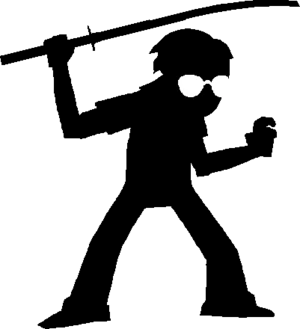
And yet the expression of this character is wholly different.
He’s often drawn slimmer, with slanted shoulders and either a thin dorito-waistline or a relatively similar shoulder to hip ratio. He often has more curved features - his jawline, his nose - and his expression almost always determined or soft. E.g. x, x, x, x, x, x
And for emphasis: this is how two artists chose to draw them side by side. E.g. x, x
It’s also very rare to see people draw Alpha Dave the same height as Bro. From memory - and I got into Homestuck roughly during the height of the Alpha kids’ popularity - most of the fanart I saw with any instance of Bro and A!Dave in the same image had a pretty fair height difference.
Again: this comes from the exact same sprite. When you layer Bro’s sprite over A!Dave’s, you’ll be able to fit them together pixel to pixel (except, of course, the arm - A!Dave’s got his arm up holding the sword, unlike Bro - and the jawline - which is much more curved than Bro’s, but when we actually see Alpha Dave’s sprite in canon, it isn’t really long enough to focus on this tiny feature [especially when you consider that Grandpa Harley has the same face shape, but people still draw him with a defined jawline]).
So, why so different? Why would people draw these two characters so wildly different when, for instance...
Both Moms are drawn almost exactly the same.
It’s pretty obvious when you think about it, but it’s also an incredibly important thing to note if you ever plan on creating your own characters.
Character interactions define how we view characters that have yet to be introduced or do not have a wholly set image.
When we think of Bro, we have to be realistic: we know absolutely nothing about who he is as a person, or what he looks like, besides the information that we get from Dave. So, when we get the information that he’s physically abusive, that he has cameras around the entire apartment, partakes in puppet snuff for the sake of a pornographic website, leaves such pornographic paraphenalia around the apartment for a young Dave to see, and that he’s emotionally closed off and distant, we immediately start to form an image of him in our minds that’s based on what we can define as an amalgamation of toxic masculinity and male abusers.
It’s not exactly hard to imagine why the most common fanart of him circulates as a tall, imposing, broad figure who barely smiles and would be incredibly hard to get around in a small, dark alley.
We also need to remember, of course, that Dave is a child while he describes Bro. An adult is almost always going to be tall and imposing to a child - is always going to be stronger and physically more capable than a child.
Bro could be the most average joe you’ve ever met, but because we learn about him from the viewpoint of a child who quite literally cannot fight back, the image of him becomes tilted to the buff end of the spectrum.
He becomes someone we would fear seeing. Someone who could overpower us, and not just a child under his care. He is big and strong because that is how Dave sees him, and that is how we come to understand him as a character.
Big, strong, violent, with sexual overtness and a lack of emotion. It’s pretty much the only way you can imagine him, even when his sprite is incredibly lacking in detail.
So, why the softness for Alpha Dave?
Pretty simply, because we already know who Dave is by the time Alpha Dave is introduced. People already had an idea of what Dave looked like, who he’d be when he grew up. People had already decided that Dave, being so different from Bro, being such a hero, would never be able to achieve the same sort of toxic masculinity that Bro did - would never have the same shape, the same musculature, that comes with that toxic imagery.
We also got told about him by a young teen who absolutely idolised him. Who emphasised his good traits and spoke about how absolutely badass he was.
The connotations with Alpha Dave are so much more positive than with Bro. That in and of itself would have changed how people drew him. But when you combine him with the concept that he’s Dave, the Dave that went through all that abuse and came out the other side hating everything that Bro stood for, it’s hard not to draw him as Bro’s nigh complete opposite.
So, he’s smaller. He’s got less of that musculature that people associate with toxic masculinity (the ability to overpower someone smaller), and he has a much closer shoulder-to-hip ratio (something that makes him take up less space, and come across as less imposing). He smiles more, he emotes more, he’s much more emotionally open - and even when he’s meant to be “cool”, it’s often with some sort of smug or determined look, not the ever-present blankness or snarl that we see from Bro.
He loses all of the traits that we’d associate with an abuser. Instead, he becomes a pretty ordinary hero - someone who can stand up and fight back, but isn’t overly heroic or powerful. Someone who might still struggle, but can handle things.
This is despite the fact, of course, that we know nothing about Alpha Dave’s upbringing or life besides what Dirk tells us - and Brain Ghost Dirk, at that. Unreliable narrators are not a good place to find valuable information, and, once again, the in-comic sprite is literally the exact same as Bro’s.
Fandom perception is an incredibly powerful thing.
So, what about Dirk? How does he fare in all of this?
Dirk’s actually a weird figure in everything, and this comes down to a very simple yet paradoxical concept:
We already had ideas on who Bro was, yet we actively get to see who Dirk is.
It’s very hard to go into something expecting one person and getting another. We can see all those notes in Dirk that we saw in Bro - the toxic tendencies, the hyper masculinity, the divorced note from people and emotions - but we see them within the specific framework of a teenager with mental illness.
This isn’t just an asshole, abusive adult. This is that adult’s younger self in a better mindset to try and do good by the people he loves. We see this time and time again - when he says how much he cares about Roxy, when he expresses his guilt that he couldn’t be romantically invested in her, when he shares the fears he holds of his splinters, when he admits that Bro is exactly what he could be and is genuinely scared of being - that he is the foundation of Bro, but not Bro in a very important way.
It’s also needless to say that people connected with Dirk in the exact same way that people connected with Dave. When you look at a lot of vent art involving him, it’s almost always about mental illness - anxiety, impulsive or intrusive thoughts, a desperate need for control in life, self harm or a dislike for oneself - and a fair bit of generic art revolving around Dirk includes some sort of deeper mental struggle.
He’s a victim, in a similar way that Dave is, but he’s also just far enough that he could be a villain.
You find that a lot of fanart therefore shows this paradoxical nature.
In some, he’s softer. The ratio between his hips and his shoulders is narrower, his jawline is more curved. E.g. x, x, x, x
In others, he’s sharper. He’s drawn with more defined muscle, with a stronger jawline and broader shoulders, and though he’s definitely slim you can definitely see just how close he is to becoming the same figure as Bro. E.g. x, x, x, x, x
And in others, he’s an odd mix of both. A brooding figure with a softer jawline, but still imposing and sharp in his own right - or even the complete opposite, with sharp features and defined shapes, but slimmer and smaller, much less imposing. E.g. x, x, x, x, x,
So, I think we can make a pretty firm observation that the way Dirk is drawn reflects how the artist views his journey and his struggles. Whether he’s his own person, closer to Bro, or somewhere stuck in between.
As you can see from most of this art, there’s a few ways that people draw Dirk; raring to fight and smug/confident, fairly sombre and down, almost tired, or standoffish and closed off. Even this is somewhere in between the way people view Bro and Alpha Dave.
So, it’s then interesting to take a look at the Epilogues.
New art of Dirk was produced in line with the Meat Epilogue. And while I really only know of one piece that catches my eye every time I see it, I think it’s important to point out that, in almost all of these images, one of two body types appear for Dirk:
1) Broad, muscular, tall. He takes up space and commands attention. Sharp features, wider shoulders.
2) Smaller, less imposing, yet somehow intimidating in just the expressions he makes and the way he holds himself. If you can imagine any fuckboy you’d be scared of being cornered by at a party, you’ve got a good idea of this style of fanart.
In other words, either tipped way more to looking like Bro, or so close to looking like something you’d be scared of IRL - which perfectly reflects how uncomfortable he feels within the narration of the Epilogue, and some of the more questionable things he has happen in it.
I also want to just add in as a side note: almost all of the links I added about Dirk go to Pinterest for sake of ease for people to find other images for reference, since I’m really just collecting the art I like most. On most of the Dirk ones, scrolling down will reveal the aforementioned vent art; on most of the Dave ones, scrolling down will reveal much softer, sweeter pieces of art involving him and people he’s loved throughout the comic. Just something interesting to add into this discussion - think about what that means for how people view either Strider.
So, what was all of this about?
Honestly, it’s me just pointing out how important character opinions and preconceived ideas are to the way people view other characters. So much of the way we see Bro is influenced by how Dave sees him and our cultural understanding of what toxic, hypermasculine male abusers look like. So much of the way we see Alpha Dave is based around our understanding of Dave, and what little we can fill in from Brain Ghost Dirk, rather than on who he actually is as a person (and we could be wrong; we could be very, very wrong). So much of the way of the way we see Dirk is influenced by Bro, and yet by what we see in canon.
If we had different ideas and different opinions from different characters, we might draw each of them wildly different. But it is this specific combination of lack of physical description and cultural association/character perception that ensures we draw them the way they are.
299 notes
·
View notes
Text
“Hot, fast, and full of garbage”: Star vs. the Forces of Evil and the Holy Grail -- and how the series writers hid their foreshadowing in plain sight from the very beginning.
As some of you know, I've written before about metaphors and symbols in Star vs. the Forces of Evil -- anything from nachos symbolizing friendship to trick candles being a metaphor for resurrection. But this? I've yet to write about something of this scope in the series.
This is big.
As incredible as it may sound, I have uncovered some symbolism that has not only been hiding in plain sight since the very first episode of the series but has also appeared in nearly every single episode since then. Further still, I believe I know what this symbolism means -- it all involves the Holy Grail -- and I can prove it. But in order to fully explain everything, however, I'd first like to walk you through my thought process in discovering the symbolism.
Please accompany me on this journey.
The Realization
A couple weeks ago, my copy of the guidebook finally came in. I started reading through it and stopped short when I came upon this unusual passage:
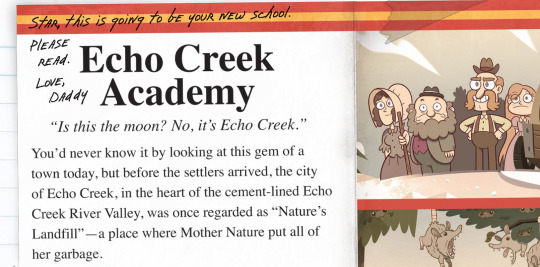
Now, this entire section of the book is utterly bizarre, but this passage in particular stood out to me. “’Nature's Landfill’”? What the hell? What the hell?
It was at this point, reading this passage, that I realized that there are, in fact, quite a few overt references to garbage in Star vs. the Forces of Evil. Off the top of my head, I recalled references to garbage in "Wand to Wand," in "Starstruck," in "By the Book," at the end of "Sleepover," and in "Collateral Damage."
I began to have a hunch that if I looked, I would find references to or depiction of garbage in every single episode of the series. So ... I looked. I went back and watched the entire series again. Amazingly enough -- with few exceptions -- there is indeed a reference to garbage in nearly every single episode of the series. There will be a list of those references near the end of this post.
Okay. So let’s say there are references to garbage in every single episode -- what does that mean?
Garbage and the Holy Grail
Not too long ago, I wrote a post about what I believed were references to Indiana Jones and the Last Crusade in season 2B. And it's a well-known fact that there's a reference to Monty Python and the Holy Grail in "Raid the Cave." Both of those films are about the Holy Grail, so I began to wonder if there were perhaps references to other films about the Holy Grail as well. So ... I started to watch all the films I could find that dealt with the Holy Grail.
One of the films I watched is called The Fisher King, a 1991 film directed by Monty Python member Terry Gilliam, which stars Jeff Bridges and Robin Williams. Jeff bridges plays a radio shock jock who has a crisis of conscience after he causes a tragedy. Robin Williams plays a homeless man who goes insane after the tragedy, believing he is a knight on the quest for the Holy Grail.
Now, there are actually a number of connections between this film and Star vs. the Forces of Evil, but the one we'll be focusing on today is garbage. Robin Williams's character, Parry, is fond of salvaging things from the garbage and giving it new life. In fact, this plays a major role in his characterization:
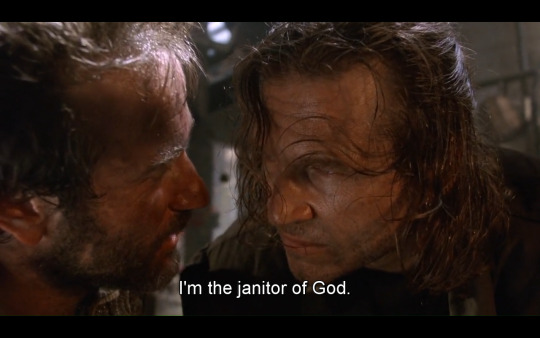

All right -- garbage. I thought to myself: "There's magic in the garbage. That's a fairly strong connection to Star vs. the Forces of Evil given all the references to garbage." Yet I couldn't quite put my finger on what, exactly, the connection was.
I discussed the film with my friends, some of whom I'd convinced to watch Star vs. the Forces of Evil with me. I have to thank my friend Aumpa in particular for giving me the final piece of the puzzle, though. After I mentioned The Fisher King's potential connection to Star vs. the Forces of Evil and explained that it had something to do with the Holy Grail and garbage, he pointed me to a page on the TV Tropes website:
The Grail in the Garbage.
And then I knew what the connection was. Then I knew why there were so many references to garbage in Star vs. the Forces of Evil. Why there's that bizarre passage in Star and Marco's guidebook. Why there are those allusions to films about the Holy Grail. It's all deliberate. It's all a deliberate reference to that trope; the Holy Grail is in the garbage.
If it sounds unlikely that the writers would make such a literal use of a trope, consider an earlier post in which I note that "Marco Grows a Beard" is, in fact, a literal use of the Growing the Beard trope: Marco literally grows a beard, and Toffee also reveals his dark intentions, adding a serious tone to the show (i.e., the show grows its beard).
The Minor Arcana and The Holy Grail
Let's consider the Holy Grail. What form could it take in Star vs. the Forces of Evil? Is it literal? Metaphorical? Symbolic? At first, I didn’t know. The cup itself is depicted in many ways in popular fiction, from a literal cup to a metaphor for a woman. Here are the options I considered:
Option #1: Starco is the "Holy Grail."
My first guess, of course, was that Star and Marco being in a relationship is the "Holy Grail" -- indeed, the one that many are watching the series for in order to see it happen. While I do think that it's inevitable that Star and Marco will be together romantically, I don't think the long-running garbage imagery would lead to such a predictable and weak payoff.
Option #2: Star herself is the Holy Grail.
There is a great deal of critical analysis of the Grail legend which points to the Holy Grail being symbolic for women and the womb -- the creative force, in other words -- a subject which comes up in popular fiction such as The Fisher King and The Da Vinci Code, for instance. This is certainly possible; as I've noted before, Star almost certainly represents the creative force and will bring this power to bear at some point soon in the future.
Yet I don't think it's likely that Star herself is the Holy Grail. Why? Well, simple: Star is on the Grail Quest. She is a knight-errant -- in more ways than one! Errant in the original sense of the word means "wandering." As I've written about before, Star is most likely represented by a wandering star (i.e., Venus). Not only this, however, but errant has also come to mean "prone to error" -- and what is Star if not that?
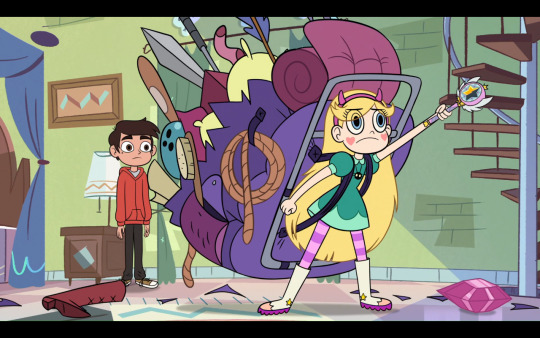
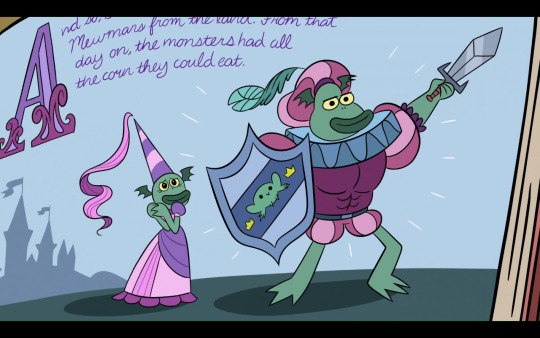
Knight-errant suits her. Star is not the Holy Grail, then: she is a knight on a quest for the Holy Grail -- even if she doesn't know it yet.
Option #3: The Holy Grail will be a literal magical object.
It's this last option which is most intriguing to me. Star vs. the Forces of Evil is set in a world in which magic is, of course, real, and a magical cup wouldn't be far-fetched given what we've already seen. Indeed, the existence of the cup may itself be foreshadowed by Star's wand due to the Minor Arcana.
You see, the Minor Arcana are an alternate way of depicting the classical French card suits (i.e., clubs, diamonds, hearts, and spades). The four Minor Arcana suits are, respectively, wands, pentacles, cups, and swords. (As you can see from the Wikipedia article, there is some variation in the suits -- pentacles can also be coins, disks, or rings.) Interestingly enough, I believe we already have a literal version of each item in question -- just as we have a character who literally has each French suit on her cheeks.
Clubs, of course, are the easiest to figure out. They are represented by wands. Both of which point to Miss Heinous and the Butterfly family wand. (Recall, amusingly, that Star also uses her wand as a literal club from time to time.)


Diamonds are next. They are represented by coins, pentacles, disks, or rings. Yet this, too, is easy to figure out: recall from my post on Toffee and the connection to The Lord of the Rings that Toffee's finger is comparable to the One Ring. It is quite fitting, after all, that diamonds should be paired with rings given that Queen Moon is the one who blasted off Toffee's finger -- don't you agree?
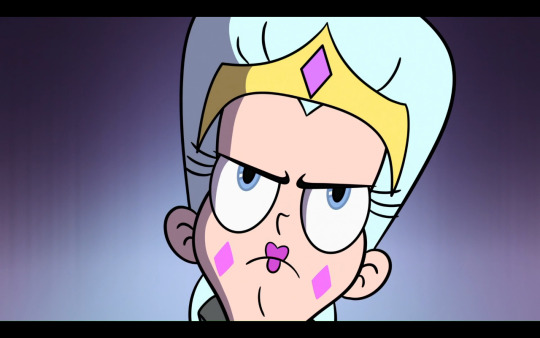
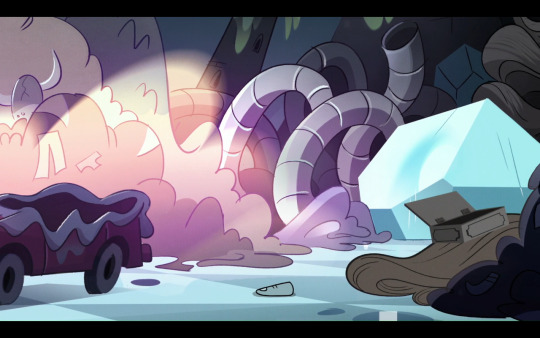
Spades come next. Eclipsa has the spades on her cheeks, and the suit is represented by swords. I believe these are represented by dimensional scissors. Hekapoo uses her dimensional scissors as literal bladed weapons, and Marco's dimensional scissors (as many have pointed out) visually resemble swords in their design.

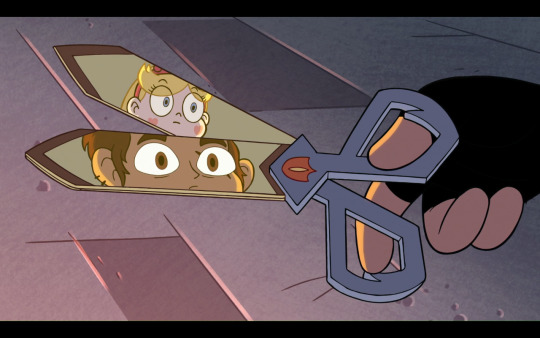
Hearts are represented by cups. If Star is the one who will find the Holy Grail -- if there will be a literal Holy Grail in the series at all -- then what else could it be but a cup, and who more appropriate to wield it than the girl with the hearts on her cheeks, Star Butterfly?
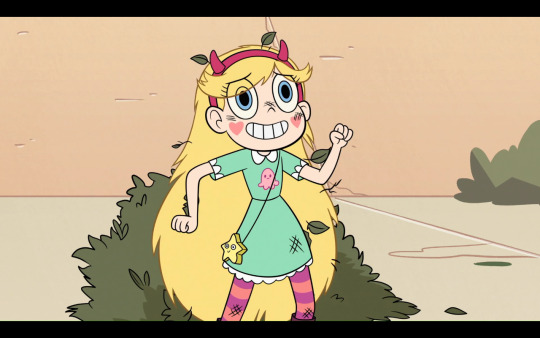
Lekmet’s Relation to the Holy Grail
I believe the Holy Grail will be a literal one -- and we have already seen it on-screen. In fact, it shows up in the very last episode of season two:
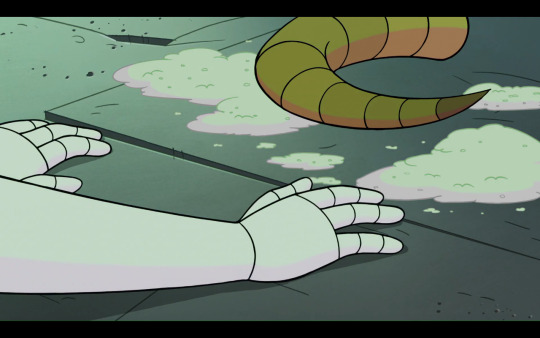
Yes, that's right. I think the Holy Grail is Lekmet's horn. You see, drinking horns were very common all across the world and especially used for ceremonial purposes. And it's clear from the fact that Moon puts Lekmet's remains within it that the horn is hollow.
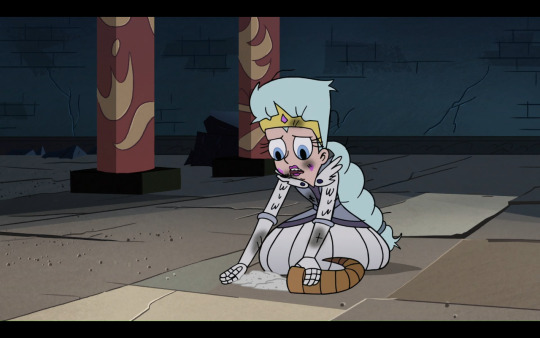
Indeed -- animal horns have long been depicted in myths as being literal or symbolic sources of nourishment, fertility, and plenty -- just look at the cornucopia, for instance. Take this into account, too: the Holy Grail is depicted as having powers of healing and restoration -- and what were Lekmet's powers? Healing and restoration. If that's not enough to convince you, there's a real-life legend that links Lekmet to the Holy Grail.
As many, many others -- including my good friend Malthus1 from the subreddit -- have pointed out, Lekmet's design is almost certainly based on Baphomet. But what if his concept is as well? Historically, Baphomet was allegedly an idol or false god that the Knights Templar, an order of Christian knights who rose to prominence during the Crusades, were accused of worshipping. The Knights Templar were subjected to arrest, torture, and death as a result of their alleged heresy. There are many legends about the knights, including ones saying that they took and guarded many important artifacts from the Holy Land during the Crusades.
One of those artifacts was -- you guessed it -- the Holy Grail. That is a direct connection from Lekmet to the Holy Grail through Baphomet and the Knights Templar, all of which are strongly associated with one another.
In Star and Marco’s guidebook, Glossaryck states this about Lekmet:
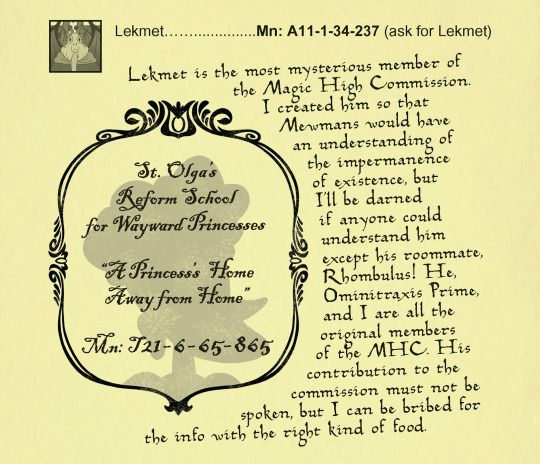
Given what Glossaryck says about “the impermanence of existence,” I think it’s possible that Lekmet is gone for good. I think it's no coincidence that Lekmet left only a single horn behind -- nor is it any coincidence that an older definition of the word garbage includes a sense meaning “the inedible parts of an animal.” The horn is garbage: it’s what Lekmet leaves behind. And yet that horn is also a cup -- one that will prove to be the Holy Grail. My prediction is that the horn's powers will lie hidden until Star discovers or activates them somehow.
Summing It Up
This post contained a lot of information to process. Let me sum it up:
In nearly every episode, starting with "Star Comes to Earth," there is a reference to or visual depiction of garbage.
Star vs. the Forces of Evil explicitly references movies about the Holy Grail in season 2B, including Monty Python and the Holy Grail and Indiana Jones and the Last Crusade.
The garbage and Holy Grail references are most likely connected to the trope Grail in the Garbage.
The French card suits -- clubs, diamonds, spades, and hearts -- are symbolically connected to the Italian card suits -- wands, rings, swords, and cups -- through literal magical objects: the wand, Toffee's finger, dimensional scissors, and Lekmet's horn.
Lekmet is based on Baphomet, who is associated in real-life legends with the Knights Templar and the Holy Grail. Lekmet's horn, which is all that's left of him -- his garbage -- is hollow and could serve as a cup.
Therefore, I hypothesize that this garbage-Grail connection foreshadows the revelation of Lekmet's horn as being a literal magical cup which Star will use to heal and restore.
I hope I have convinced you that there is more -- far more -- going on in Star vs. the Forces of Evil than meets the eye. You know, it's funny ... all of that garbage was hiding in plain sight this whole time, scattered throughout the entire series. Garbage blends in, you see. We don’t pay attention to it.
Would you have even noticed it if I hadn't pointed it out?
It's clear to me that the writers tried to make us aware of these connections without tipping their hands too much. (An appropriate metaphor, considering the subject of card suits.) They put in key references to films -- references to the Grail Quest -- but these references are so subtle that you might not think they mean anything at all.
In fact, the way the writers write reminds me of a line from Futurama:
God Entity: (chuckles) When you do things right, people won't be sure you've done anything at all.
But that’s why I’m here. To make sure the true depth of their writing gets noticed.
Never let anyone tell you that Star vs. the Forces of Evil isn't well-written. It has all the hallmarks of a well-executed story. Is it tricky? Absolutely. The writers have intentionally deceived people into thinking the show is simpler than it is. I can't tell you how many times I've heard people refer to it as "generic."
It is not simple. It is not generic. It is anything but.
When I say that the foundations of our silly little adventure cartoon rest on literary traditions as old as storytelling itself -- I fucking mean it.
I hope you enjoyed reading this post. I can't begin to tell you how extraordinarily challenging it was to write about this topic -- not to mention how long it took. I don't know about you, but I simply cannot believe the depth of meaning that I have discovered in Star vs. the Forces of Evil. To that end, as I promised earlier, here follows a list of all the references to garbage in the series.
The List of References to Garbage
Note: these references are based on strict guidelines. Only explicit visual depictions or dialogue references to garbage, trash, junk, waste, garbage cans, junkyards, dumps, dumpsters, or throw away are accepted. After some consideration, I ruled out mess, bathroom, and similar words and phrases (and there are quite a few) because I felt that the connection wasn't strong enough. There may be multiple references to garbage in each episode, but for brevity’s sake, I’m only going to post one screenshot per episode.
Episode 1a, "Star Comes to Earth"
There’s a dumpster in the background after the monster fight.
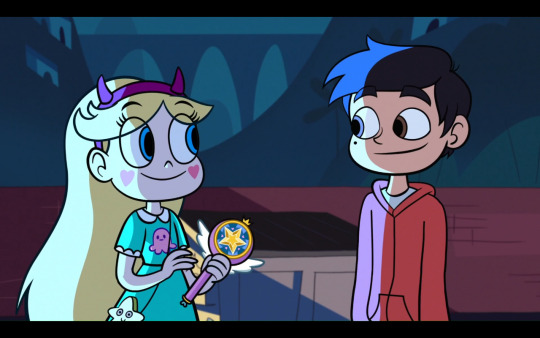
Episode 1b, "Party with a Pony"
Square: I think I’m next. But with less abusive trash talk, please.
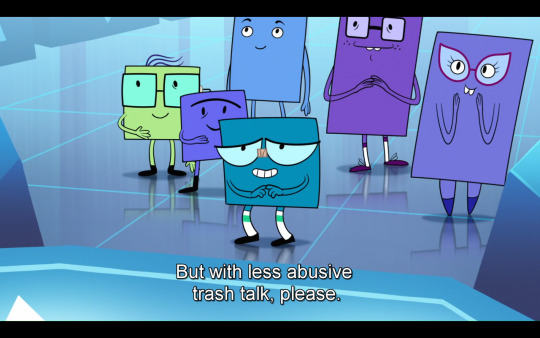
Episode 2a, "Matchmaker"
Miss Skullnick: He dumped me, I think. I don’t know.
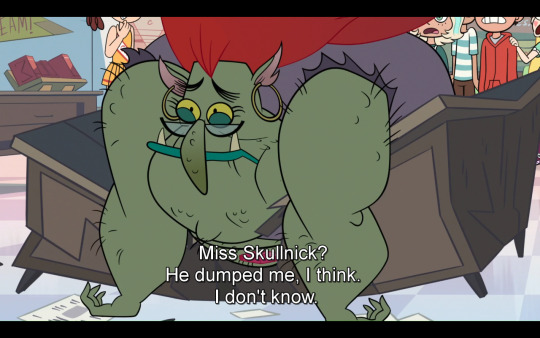
Episode 2b, "School Spirit"
Star pesters some stray cats in a dumpster.
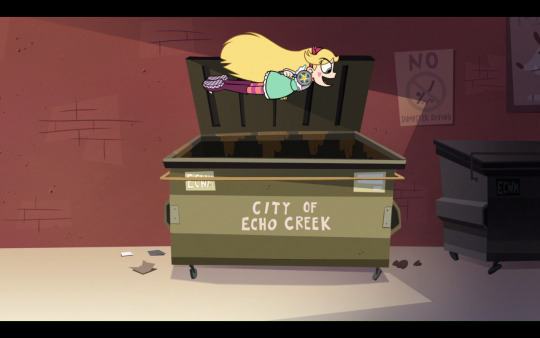
Episode 3a, "Monster Arm"
Star: Jeremy Birnbaum? Isn't that the talking bear that used to rummage through my parents' garbage?
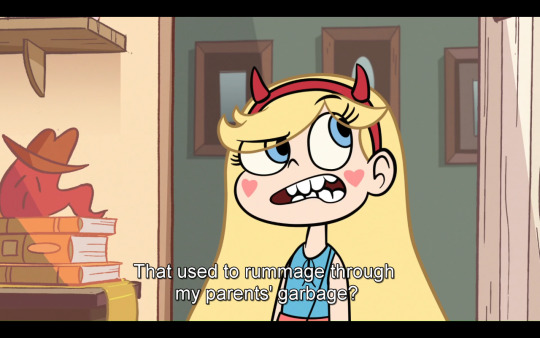
Episode 4a, "Cheer Up Star"
Marco falls into the garbage on picture day.
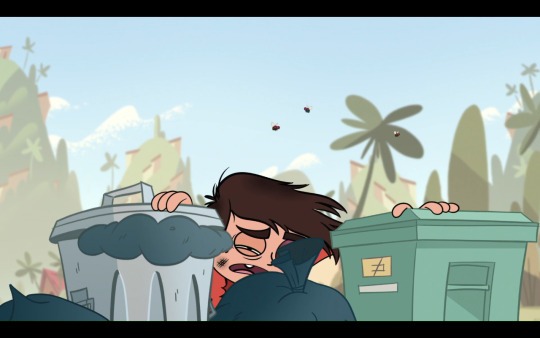
Episode 4b, "Quest Buy"
Star’s side of the bathroom is littered with junk..

Episode 5b, "Brittney's Party"
Marco and Ludo take turns throwing up into a garbage can.
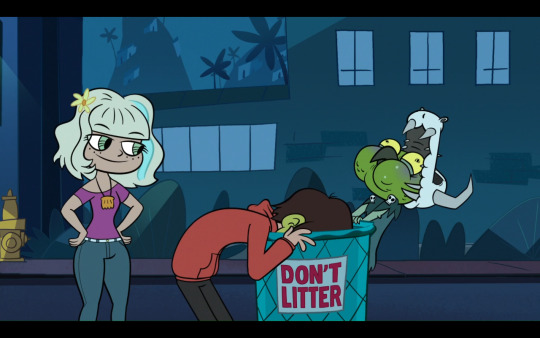
Episode 6a, "Mewberty"
Glossaryck: Look, kid. Nature is like a runaway dump truck: hot, fast, and full of garbage.
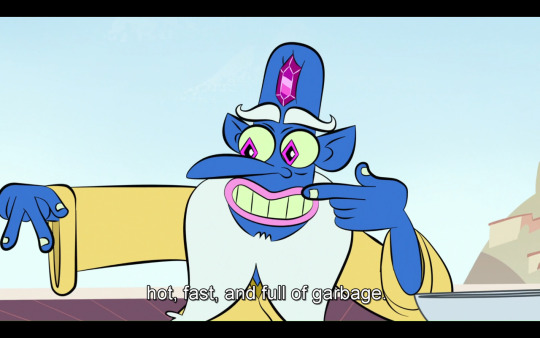
Episode 7a, "Lobster Claws"
Ludo: You, sir, are a steaming pile of monster garbage. And you’re fired!
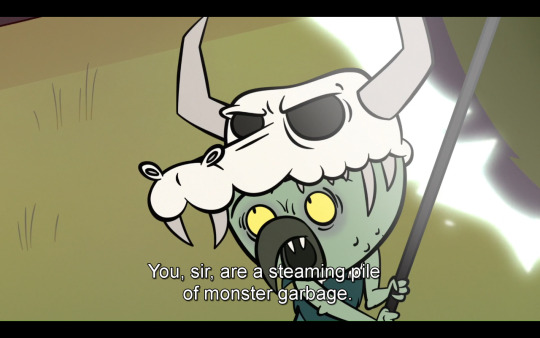
Episode 8a, "Blood Moon Ball"
Bored Demon: Piece of garbage that doesn't destroy the universe. Stupid cockroach that lives inside. I'm over it already!.
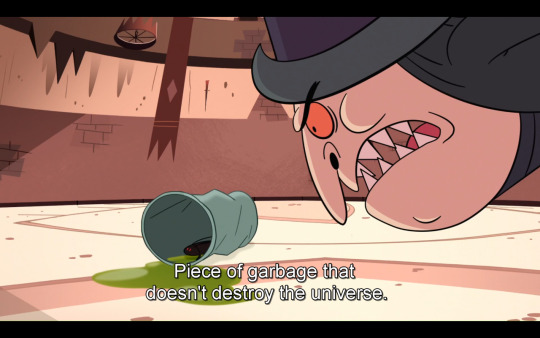
Episode 8b, "Fortune Cookies"
Marco gets locked in a dumpster.
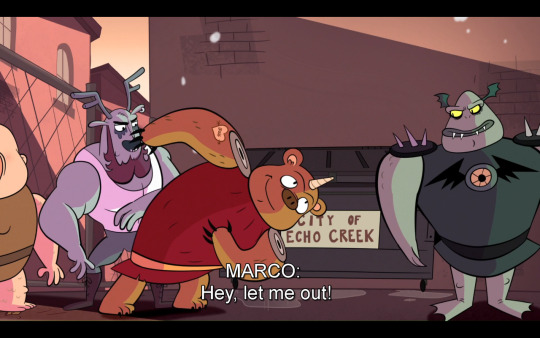
Episode 9a, "Freeze Day"
A trash can can be seen as Marco looks at Jackie.
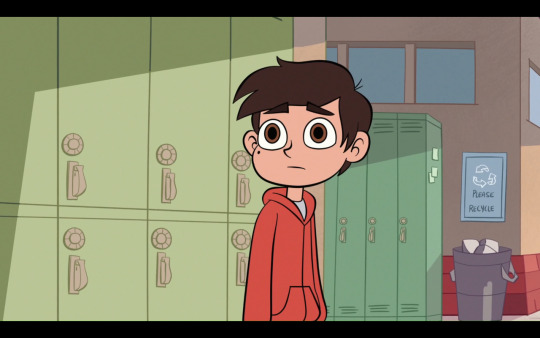
Episode 9b, "Royal Pain"
There's a garbage can in the corner in the bathroom.
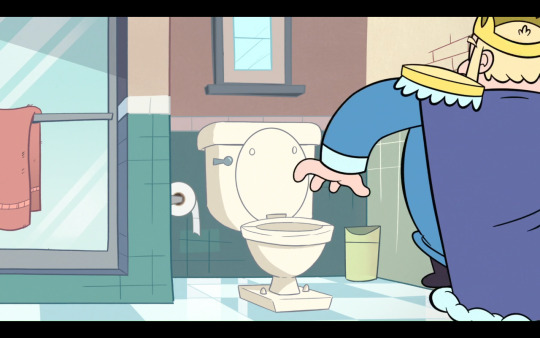
Episode 10, "St. Olga's Reform School for Wayward Princesses"
Announcer: Don't allow your noble lineage to be thrown away!

Episode 11a, "Mewnipendance Day"
Toffee: I thought you might, you fat bag of garbage.
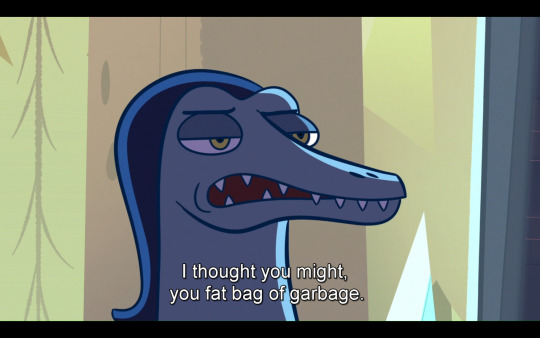
Episode 11b, "The Banagic Incident"
Garbage is seen floating in Echo Creek when Star's on her journey.

Episode 14a, "My New Wand!"
Star’s secrets closet is filled with garbage.
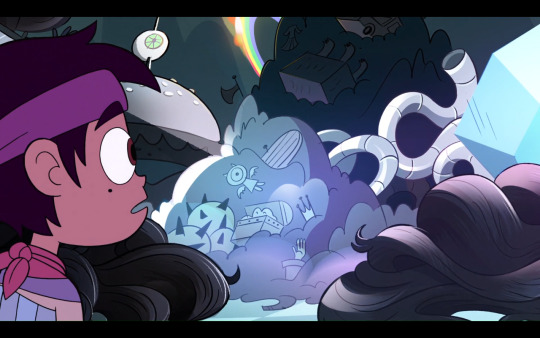
Episode 14b, "Ludo in the Wild"
Ludo passes by floating garbage in space.
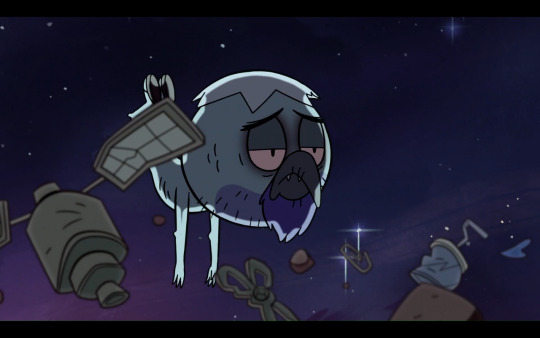
Episode 15a, "Mr. Candle Cares"
Prime Janitor of Beautiful Garbage Island! (Note that there's a rainbow leading to the island. What's at the end of a rainbow? Treasure.)
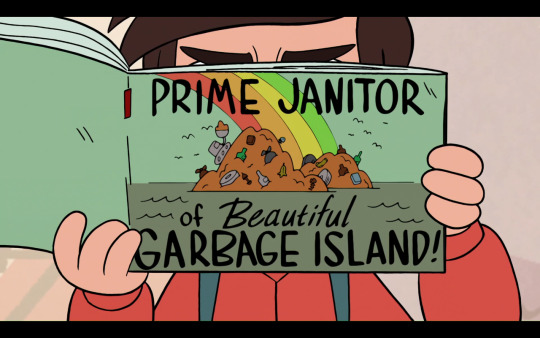
Episode 15b, "Red Belt"
Star trashes the house while looking for a hammer.
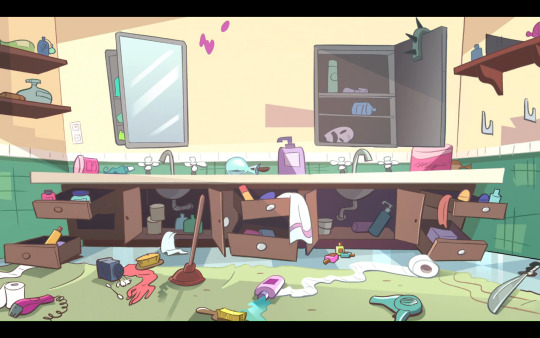
Episode 16a, "Star on Wheels"
Marco: Uh, why is your car filled with garbage?
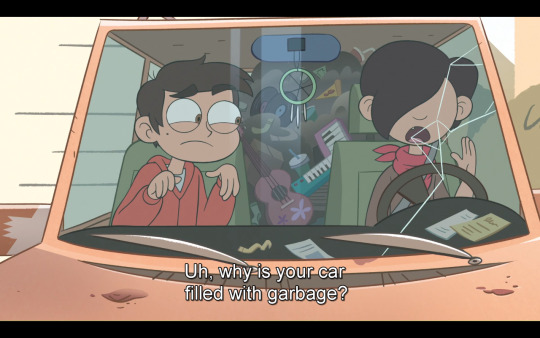
Bonus Quote:
Glossaryck: If you want to save Star, trust in goats.
Episode 16b, "Fetch"
Star’s wand almost falls into the trash can.

Episode 17a, "Star vs. Echo Creek"
There's all kinds of garbage around Echo Creek.
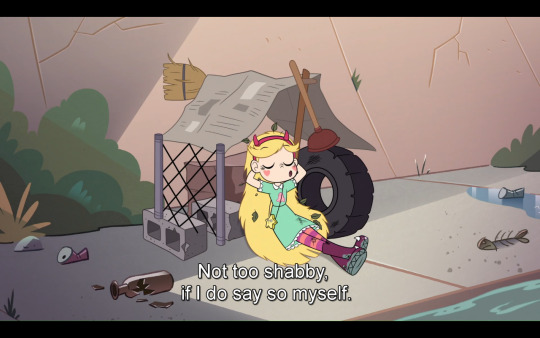
Episode 17b, "Wand to Wand"
Cloudy spills garbage all over the house.

Episode 18a, "Starstruck"
Star and Marco wait by the dumpsters for the old donuts to be thrown away. Mina plays in the trash.
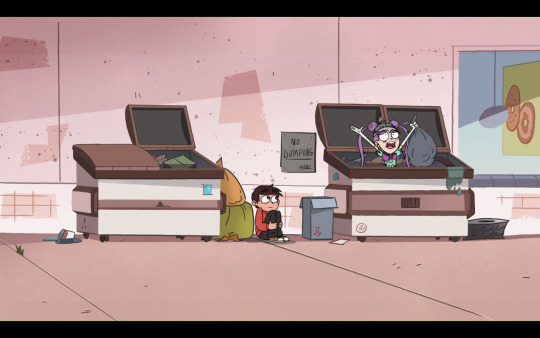
Episode 19a, "Starsitting"
There's a garbage can beside the wall after Marco gets thrown from the treadmill.

Episode 20a, "Goblin Dogs"
Kelly throws away apple cores.
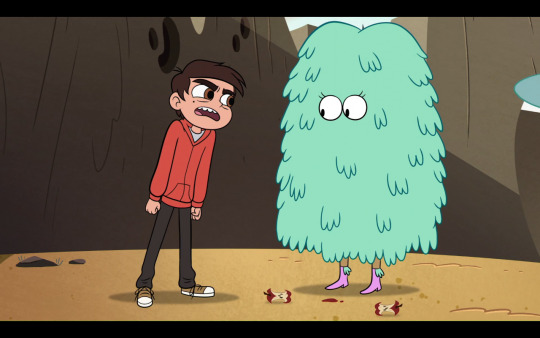
Episode 20b, "By the Book"
Star and Marco throw Glossaryck into "the most disgusting dumpster in town."
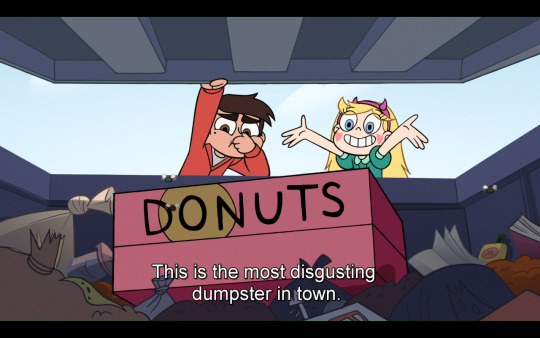
Episode 21a, "Game of Flags"
Star: You don't waste time on anybody.

Episode 21b, "Girl's Day Out"
Star and Janna ride a janitor's cart, which has a trash can on it.
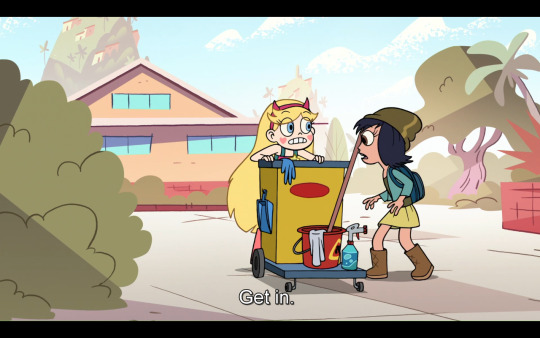
Episode 22a, "Sleepover"
The Truth or Punishment Box ends up in the garbage.
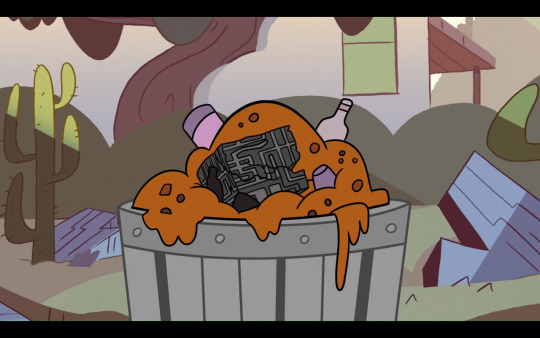
Episode 22b, "Gift of the Card"
Marco: If you're going to rush me, then I'll just buy some piece of junk now, and come back to exchange it later, okay?
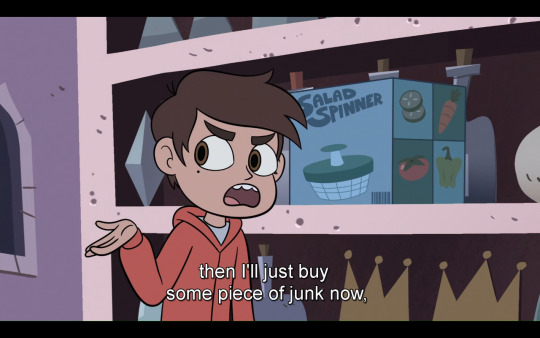
Episode 23a, "Friendenemies"
Tom: Mackie Hand movies are garbage.

Episode 23b, "Is Mystery"
There's a hole marked "waste" where monsters get thrown if they don't grind corn.
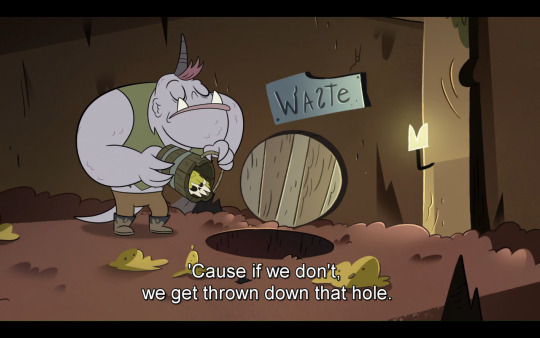
Episode 25a, "Into the Wand"
Star throws Toffee's finger into her garbage-filled secrets closet.

Episode 25b, "Pizza Thing"
Pony Head and Marco's stolen car comes to rest in a junkyard.

Episode 26a, "Page Turner"
There's a discarded can and a junkyard in the crystal ball.
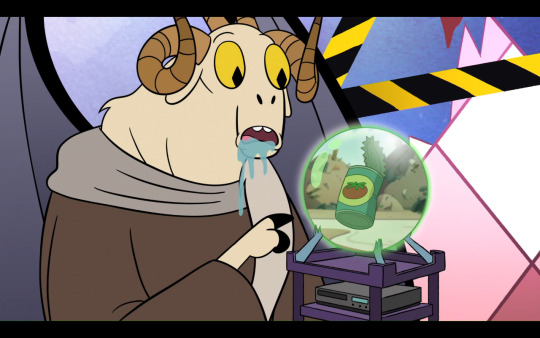
Episode 26b, "Naysaya"
Marco: I pulled it out of the trash in art class.
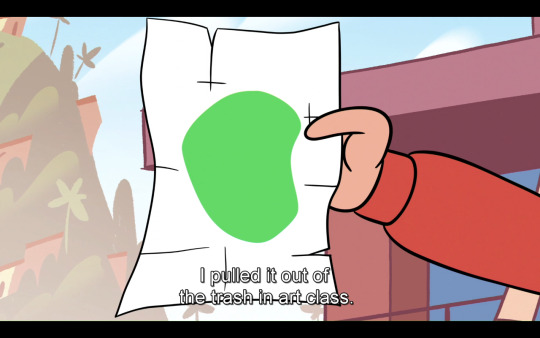
Episode 27, "Bon Bon the Birthday Clown"
Star: Yeah. This place is a dump.

Episode 28a, "Raid the Cave"
Star: This was all a waste of time.
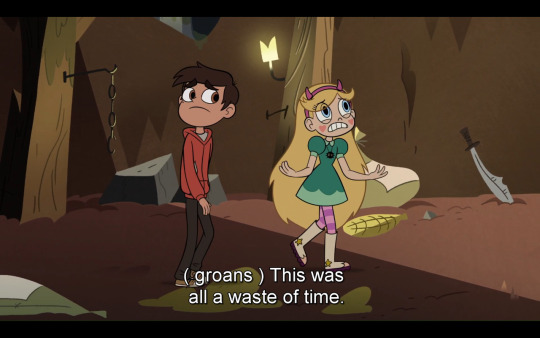
Episode 28b, "Trickstar"
Preston Change-O mentions “empties” -- i.e., recyclable trash -- in his analogy for joy sucking.
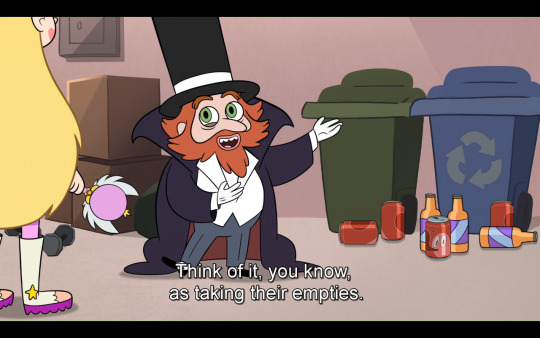
Episode 29a, "Baby"
Star cleans up all kinds of garbage in her room before Baby arrives.

Episode 29b, "Running with Scissors"
Marco is trying to throw something away when Hekapoo finds him.
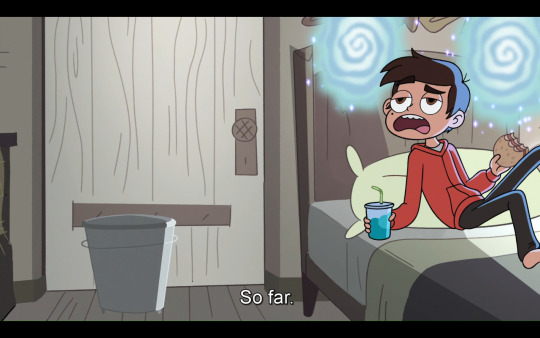
Episode 30a, "Mathmagic"
Miss Skullnick inexplicably turns into a trash can.
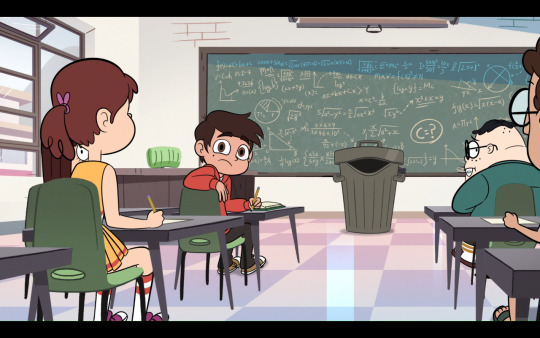
Episode 30b, "The Bounce Lounge"
Marco: What a dump!
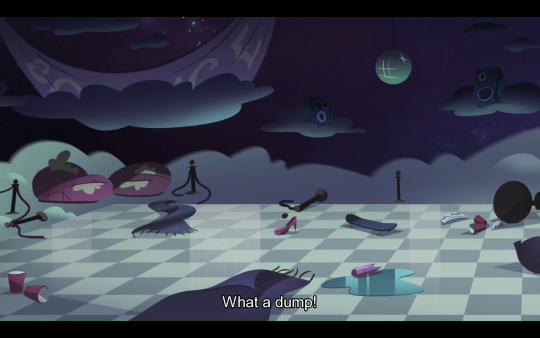
Episode 31a, "Crystal Clear"
Star: What a waste of donuts.
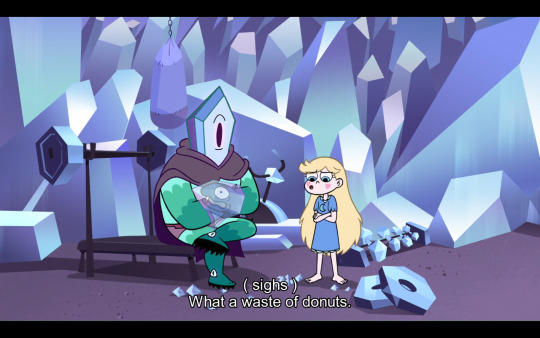
Episode 31b, "The Hard Way"
There's a pile of empty packages of pudding after Ludo learns to levitate.

Episode 32a, "Heinous"
The school is filled with garbage in Miss Heinous's flashback.
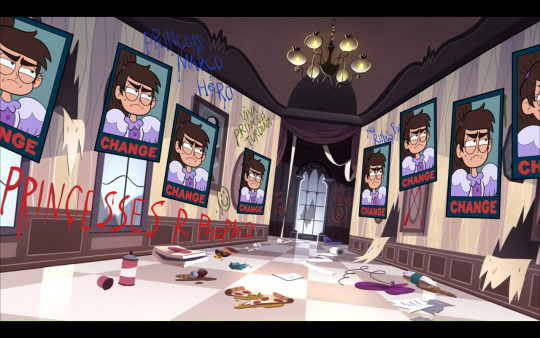
Episode 33a, "Collateral Damage"
This episode heavily centers around trash. Some prominent examples:
Janna: Come on, you know this stuff is garbage.

Star throws everything, including Otis, into the dumpster.
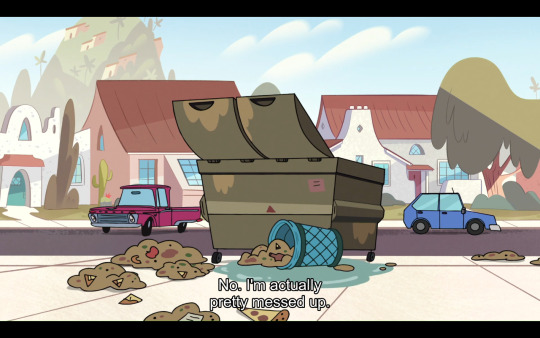
The old janitor throws some books into a trash can fire.
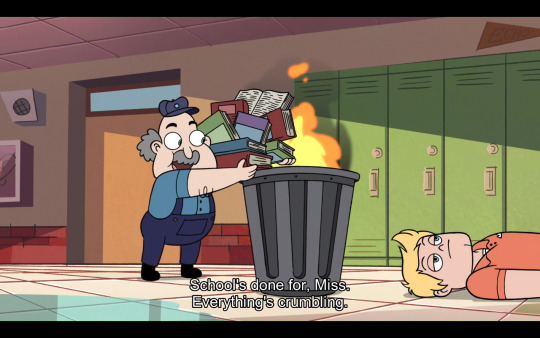
Episode 33b, "Just Friends"
There's trash on the ground as Star walks out of the stadium.

Episode 34, "Face the Music"
The laser puppies knock over a conspicuously-placed trash can in Star's bedroom.
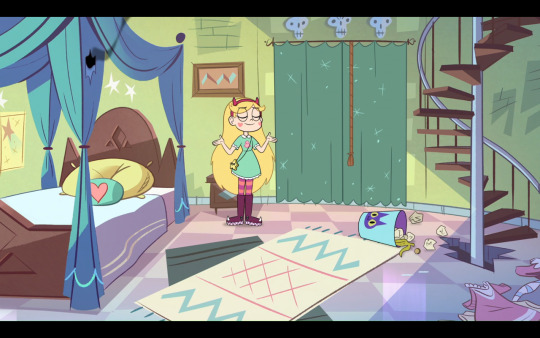
Episode 35, "Starcrushed"
There's a trash can fire at the bad kids' party.

Out of 65 episodes, 53 have garbage in them. I’d say that’s significant.
I’ll close this with some dialogue from The Fisher King:
Parry: Your calculations determine whether a book is published or not. You know, maybe it's a book that changes the way people think or, you know, act.
Lydia: Yeah, but what we publish is mostly trashy romance novels.
Parry: Don't say that. There's nothing trashy about romance. In romance there’s passion. There's imagination. There's beauty. Besides, you find some pretty wonderful things in the trash.
80 notes
·
View notes
Text
Hyperallergic: At the Denver Airport, Art Fuels Conspiracy Theorists
Leni Schwendinger, “Deep Time / Deep Space, A Subterranean Journey” (1995) (all photographs courtesy Denver International Airport)
A major transportation hub just about smack in the middle of the country, the Denver International Airport (DIA) offers an interesting layover to travelers willing to explore its bustling terminals. DIA and the art in its collection have been the subject of conspiracy theories dating back to the airport’s construction, while new technical difficulties have emerged in the maintenance and display of its ambitious permanent installations. From the so-called “Blucifer” sculpture that greets visitors as they drive up to the terminal, to the newest acquisition — a futuristic installation by Anibal Catalan — it’s hardly surprising that the DIA was deemed the “best US airport for art.” But don’t expect cottage paintings or pleasant abstraction here. The DIA art collection stands out for shunning the niceties of conventional airport décor and embracing the weird, with a focus on permanent installations.
Luis Jiménez, “Mustang” (2006–08)
The airport’s art has been in the news recently because an installation by Michael Singer, “Interior Garden” (1995) — commissioned for the opening of the airport itself — was flagged by management as an expensive liability. This led to outcry against the proposed deaccessioning of the work, with the public weighing in on the piece’s value for the airport and the city. The collection is collectively valued at over $14 million, but the DIA communications department told the Denver Post that some $800,000 has gone into the maintenance of “Interior Garden” in the 22 years since the airport opened. DIA allocated a whopping $650,000 for the removal of the installation, which mimics ancient ruins alive with plant life and flowing water in the airport’s C concourse. According to airport officials who want to be rid of the needy artwork, the installation leaks, attracts pests, and “creates a hazardous situation for passengers.” The final call as to whether to destroy “Interior Garden” has fallen to Denver Arts and Venues director Kent Rice, who has yet to make a decision.
Michael Singer, “Interior Garden” (1995)
Michael Singer, “Interior Garden” (1995)
Catalan’s new installation, which was facilitated by Mexico City gallerist Brett W. Schultz, makes the DIA collection even more diverse and shows a commitment to permanent installations — even if they involve more work and long-term costs for the airport. The cluster of sculptures by Catalan, “Vorticity” (2016), is beautifully out of place among the C concourse’s fast food chains. The suspended swarm of yellow, black, and silver geometric mobiles might be abstracted bees, but more likely they’re spaceships or intergalactic settlements forming the spiral of a new galaxy. The artist’s background in architecture is evident in the installation’s industrial forms and its integration with the hectic airport environment.
The DIA art collection is managed by the city’s public art program and a cultural commission, who provide counsel to the airport about which works to purchase using funds from the city’s Percent for Art program, which sets aside 1% of the budget for any major municipal capital-improvement construction project for public art. Denver’s public art officials may be knowingly fomenting the conspiracy theories surrounding the airport by filling its concourses with works that are so anomalous; DIA senior public information officer Heath Montgomery told the Denver Post that the conspiracy theories add up to “hundreds of thousands or even millions of dollars” in free advertising.
Anibal Catalan, “Vorticity” (2016)
Take, for example, two murals by Leo Tanguma that have long been cited by conspiracy theorists as “evidence” of either a secret masonic apocalypse shelter, an alien colony, or a secret CIA base beneath passengers’ feet. (Most of the conspiracy theories surrounding DIA claim that there are up to six additional levels concealed beneath the airport.) Tanguma’s murals, “In Peace and Harmony with Nature” and “Children of the World Dream of Peace,” have been at the center of conspiracy theories because of their apocalyptic imagery, which allegedly references Freemason iconography.
Leo Tanguma, “Children of the World Dream of Peace” (1995)
Detail of Leo Tanguma, “Children of the World Dream of Peace”
In the left panel of “Children of the World Dream of Peace,” children from many cultures come together to destroy swords and daggers that are sheathed in the flags of many nations. In the smaller right panel, a menacing soldier impales a dove with a saber while brandishing a machine gun. “In Peace and Harmony with Nature,” which also spans two panels, features one scene showing the bountifulness and diversity of natural life, while the other depicts the extinction of animals and cultures at the hands of modern humans. The murals, which were commissioned for the airport during its construction, certainly contain multilayered images of a mysterious (perhaps even apocalyptic) nature, but clues to a secret alien-illuminati plot? I doubt it. More likely, conspiracy theorists are seeing what they want to in the compositions’ charged imagery, rather than Tanguma’s overt allusions to the dangers of war and climate change.
Conspiratorial “experts” like Jay Weidner assert that the airport’s murals and capstone prove the existence of a secret government plan for a “New World Order.” Others implicate the airport in the murder of JonBenét Ramsey. One local Evangelical Christian group, Cephas Ministries, claimed that the DIA was built as part of a plot to murder the “people that Lucifer hates.”
Leo Tanguma, “In Peace and Harmony with Nature” (1995)
The misreadings by “paranoid doomsday theorists,” as Rachel Cole Dalamagas put it in her interview with Tanguma for Zing Magazine, point to an important facet of the conspiracy surrounding the DIA that has rarely been discussed. Tanguma is an important Denver-based Chicano artist who, throughout his career, has combined symbolism from history and mysticism with the techniques of the 20th-century Mexican muralists. His work at the DIA is part of a larger body of work that deals with American socio-political issues from his uniquely hybrid perspective.
The DIA was planned and built during the administrations of Federico Peña and Wellington Webb, the first Hispanic and African American mayors of Denver, respectively. These two men made a point of hiring immigrant workers and minority-owned businesses, which resulted in uproar among the state’s conservatives. DIA was deemed a disaster during Peña’s administration and Webb was accused of corruption, but the airport became one of the most efficient and profitable in the country. The success of the airport as a transportation and cultural hub more than 20 years later is a testament to the legacies of the former mayors, whose vision for a diverse and provocative Denver can still be seen in the airport’s art collection.
Betty Woodman, “Balustrade” (1993)
Like all airports, DIA contains its fair share of bland, cookie-cutter art that won’t inspire many jet-lagged travelers to look up from their phones. The statue of astronaut Jack Swigert in concourse B, murals of the Old West, and the word “Relax” in giant, glowing letters fit snugly into typical airport art conventions. Many airports, like Houston’s, have big, expensive, and not especially memorable or noteworthy art collections that blend into the background of departure time monitors, advertisements, duty free stores, and fast food chains. DIA’s works that inspire controversy and conspiracy are a special exception.
Terry Allen, “Notre Denver”
The post At the Denver Airport, Art Fuels Conspiracy Theorists appeared first on Hyperallergic.
from Hyperallergic http://ift.tt/2sZMi7M
via IFTTT
0 notes